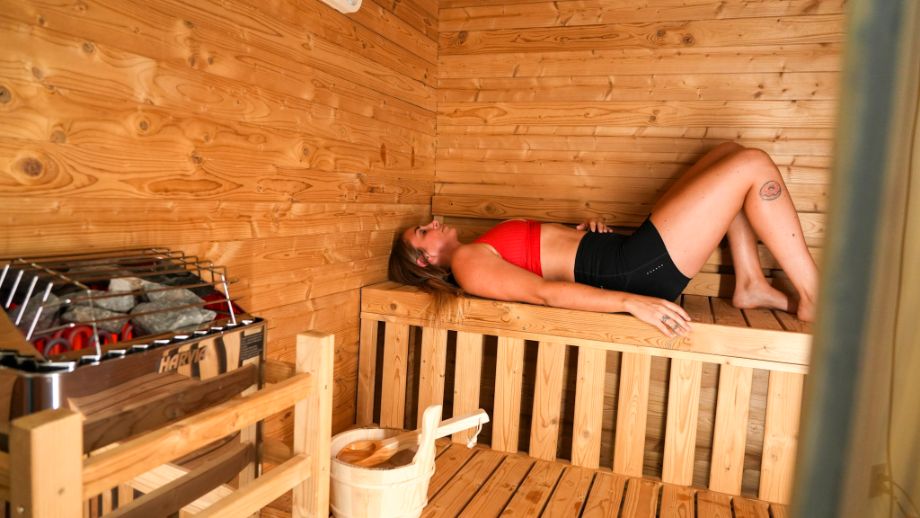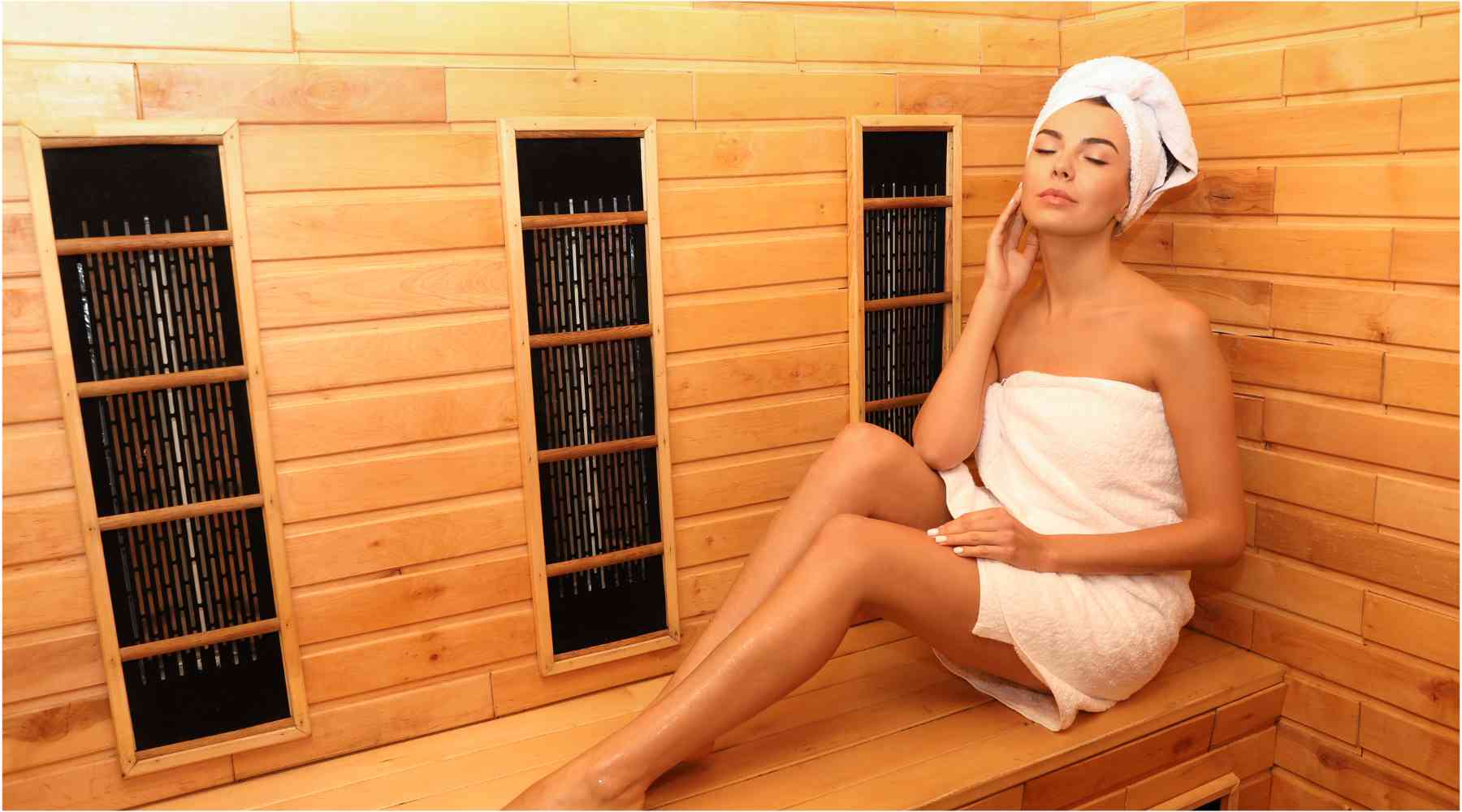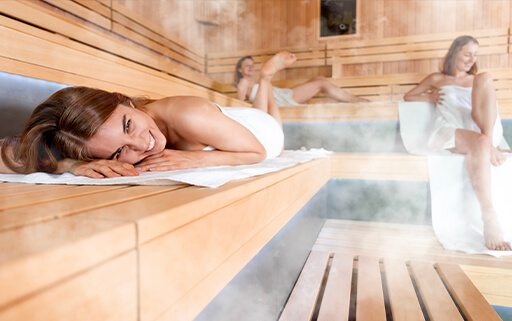After a good workout, relaxing in a sauna feels great, but how long should you stay in to get the benefits? In this post, we’ll share the best amount of time to spend in the sauna after exercising. We’ll look at what works best for different people and share some tips to help you use the sauna safely and effectively as part of your cooldown routine.

Contents
How Long To Sit In Sauna After Workout?
It’s generally recommended to sit in a sauna for no longer than 15-20 minutes after a workout. This duration allows your body to reap the benefits of the sauna’s heat while still being safe and avoiding overexertion.
Here are some general guidelines for how long to sit in a sauna after a workout:
- 15-20 minutes – This is the recommended maximum time for most people to spend in a hot sauna after exercise. Any longer increases risks of dehydration and dizziness.
- 5-10 minutes – For beginners or those not used to saunas, start with just 5-10 minutes after your workout. This allows your body to adjust to the heat gradually.
- Take breaks – Don’t stay in the full 15-20 minutes without a break, especially after an intense workout. Step out for a few minutes to cool down, hydrate, and wipe off sweat periodically.
- Listen to your body – If you start feeling faint, nauseous or have heart palpitations, exit the sauna immediately. Don’t try to “tough it out.”
Benefits of Sauna Post-Workout
Using a sauna after working out has several potential benefits that can enhance your overall fitness routine and recovery process. Here are some key advantages:

-
Muscle Relaxation and Recovery: The heat from a sauna helps to relax muscles and alleviate tension. This can reduce muscle soreness and stiffness after intense workouts, speeding up the recovery process.
-
Increased Circulation: The high temperatures in a sauna cause blood vessels to dilate, increasing blood circulation. This enhanced blood flow helps to transport nutrients and oxygen to tired muscles, aiding in repair and recovery.
-
Detoxification: Sweating in a sauna can help flush out toxins that accumulate in the body. The deep sweating achieved in a sauna can help eliminate heavy metals like lead and mercury, as well as other toxins.
-
Stress Reduction: Sauna sessions can be incredibly relaxing, offering a quiet space to unwind and decompress. This can reduce stress levels and promote a sense of well-being, which is crucial for overall health and recovery.
-
Improved Cardiovascular Performance: Regular sauna use has been shown to mimic cardiovascular exercise because it raises your heart rate similar to physical activity. Over time, this can help improve cardiovascular health.
-
Support for Weight Loss: While the weight lost in a sauna is primarily water weight, the process of sweating and the associated calorie burn can contribute to overall weight management when combined with regular exercise and a healthy diet.
-
Enhanced Immune System: Regular sauna use can lead to an increase in white blood cell count, which strengthens the immune system and helps to fend off illness.
-
Skin Cleansing: The intense sweating cleanses the skin more deeply than usual by flushing out impurities and dead skin cells, leaving the skin with a healthy glow post-sauna.
Sauna Basics And Precautions
Here’s a quick guide to the basics of sauna use and the precautions you should take:

Sauna Basics:
- Types of Saunas: The three main types of saunas are traditional, steam, and infrared. Traditional saunas heat the air around you, steam saunas add humidity, and infrared saunas warm your body directly with light.
- Temperature: Sauna temperatures vary between 150°F to 195°F (65°C to 90°C).
- Duration: Typical sessions last between 5 to 20 minutes, based on personal comfort and tolerance.
- Clothing: It’s common to wear a swimsuit or just wrap in a towel. Keeping clean is important to maintain personal comfort and hygiene.
Sauna Precautions:

- Hydration: Drink plenty of water before and after your sauna session to prevent dehydration.
- Alcohol and Medication: Avoid alcohol and be cautious with medications that affect your heart rate or hydration.
- Time Limit: Don’t overdo it. Start with shorter sessions and gradually increase your time as you become accustomed to the heat.
- Health Conditions: People with heart conditions, high blood pressure, or pregnant women should consult a doctor before using a sauna.
- Symptoms to Watch For: Exit the sauna if you feel dizzy, lightheaded, or nauseous.
- Cool Down: Allow your body to cool gradually after leaving the sauna to avoid shock from a sudden temperature change.
- Cleanliness: Always sit on a towel for hygiene and clean up any sweat left behind.
Frequently Asked Questions
What are the disadvantages of sauna?
While saunas offer numerous health benefits, they may increase itching in people with atopic dermatitis. Furthermore, they aren’t recommended for individuals with unstable angina pectoris, recent myocardial infarction, or severe aortic stenosis.
Should you wipe the sweat off after sauna?
Yes, it’s important to wipe sweat off during and after a sauna session. Using a towel not only aids in sanitation but also encourages more perspiration. Make sure to thoroughly wipe down after exiting the sauna.
Can I bring my phone in a sauna?
It is not advised to bring your phone into a sauna because the high temperatures and humidity can potentially harm your phone’s internal components, possibly leading to overheating or even explosion.
What toxins do saunas remove?
Several studies have shown that saunas, especially infrared/steam saunas, can help remove a variety of toxins through sweat, including heavy metals, phthalates, flame retardants, Bisphenol A, pesticides, and PCBs.
How many calories do you burn in a 30-minute sauna?
A 15-30 minute sauna session can burn 1.5 – 2 times the calories you would burn while sitting elsewhere. So, for an average 150lb woman, approximately 68 calories could be burned every 30 minutes in a sauna.

Hello, I’m Ravindra. Over the years, I’ve immersed myself deeply into the world of fitness and health, transforming both my body and mind. Writing has allowed me to share my journey, insights, and expertise with those just starting out and seasoned fitness enthusiasts alike. Beyond just routines and diets, I believe in inspiring others to adopt a holistic approach to well-being.
